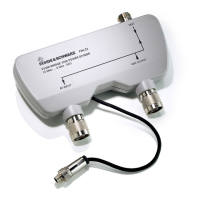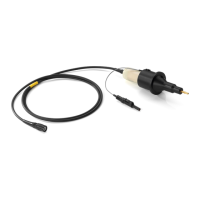MeasurementsMXO 4 Series
233User Manual 1335.5337.02 ─ 07
Remote command:
MEASurement<mg>:GATE on page 619
Envelope
This setting is only available for measurements on envelope waveforms, see Acquisi-
tion mode.
"Both"
The upper and the lower envelope are used in measurements. For
time measurements, the averages of min and max values are used,
that is, the measurement is performed on the average waveform built
from the upper and lower envelope.
"Maximum"
Measurements are performed on the upper envelope.
"Minimum"
Measurements are performed on the lower envelope.
Remote command:
MEASurement<mg>:ENVSelect on page 615
Pulse count
Available, if "Specific type" is set to "Pulse train".
Sets the number N of positive pulses for the "Pulse train" measurement. This measure-
ment measures the duration of N positive pulses from the rising edge of the first pulse
to the falling edge of the N-th pulse.
Remote command:
MEASurement<mg>:AMPTime:PTCount on page 617
Pulse slope
Available, if "Specific type" is set to "Pulse count".
Sets the first slope of the pulses to be counted.
"Positive"
Positive pulses are counted.
"Negative"
Negative pulses are counted.
"Either"
Both positive and negative pulses are counted.
Remote command:
MEASurement<mg>:AMPTime:PSLope on page 617
Edges slope
Available, if "Specific type" is set to "Edge count" or "Delay to trigger".
Sets the edge direction to be used for delay measurement: positive, negative, or either
edge.
Remote command:
MEASurement<mg>:AMPTime:ESLope on page 616
Setup/Hold time measurement
Setup/Hold measurements analyze the relative timing between two signals: a data sig-
nal and the synchronous clock signal. Setup time is the time that the data signal is
steady before clock edge - the time between a data transition and the next specified
clock edge. Hold time is the time that the data signal is steady after clock edge - the
time between a data transition and the previous specified clock edge.
Automatic measurements

